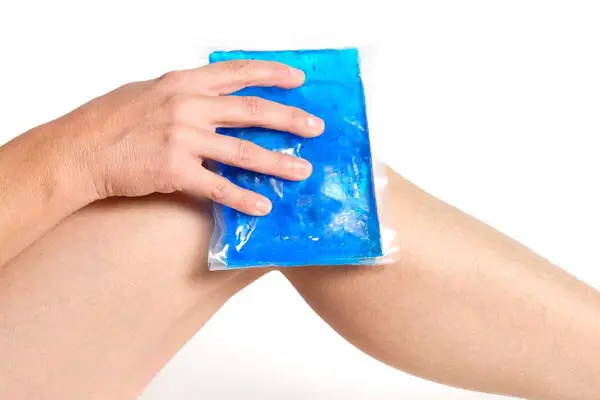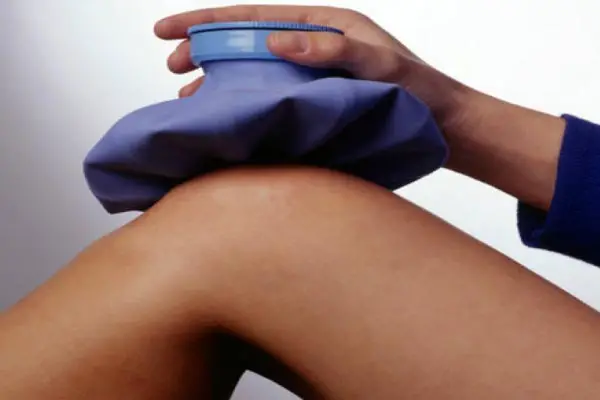
There seem to be so much confusion about the treatment of pains with ice and heat.
This confusion should not be because therapeutic use of ice and heat through Cryotherapy and thermotherapy procedures are effective.
Both ice and heat treatments are quite rational, and they belong to a group of effective self-treatment options that are non-invasive, therefore they carry very minimal risks.
The answer to the confusion about whether to use heat or cold is straightforward- it all depends on the type of pain being treated.
Which is better for your pain – Ice or heat?
If you have injuries, you should consider using ice treatment, and when you are dealing with muscular pains, heat treatment will provide a more effective treatment.
Ice is more ideal for injuries, because it calms down the damage superficial tissues that have been inflamed, swollen and hot.
The natural inflammatory process can be normal and healthy, but can become stubbornly painful than expected.
Ice treatment is the simplest, non-invasive and drug-less treatment of making the inflammatory pains dull.When a muscle has been freshly pulled, it will likely respond to treatment more easily than any other form of treatment.
Heat is the perfect treatment for chronic pain, stress and muscle pains. In these cases, you may have to deal with the trigger points alongside whole muscle spasms that can trigger bigger pains such as back, and neck pains.
Pains associated with the Nervous system must also be handled with heat treatment. Stress and fear can also aggravate some pains, and cold treatment will not work for these.
What you must not use Ice and heat treatments for
Some forms of inflammation can get worse when treated with heat, similarly, ice treatments can worsen some muscle spasms, and muscle tension worse.
For this reason, Heat and cold treatments must not be mixed up, to avoid them causing some mild harm.
Icing pains when you are shivering, or heating up when you are already feeling warm, can worsen your situation- the brain may receive some sensations of harm in these two cases, and that may cause the pain to increase sharply.
Heat treatment on inflammation is a bad choice, similarly, applying heat to a fresh injury will definitely make the pain get worse- applying heat to a fresh injury will cause a dramatic swelling of the affected area, and that may cause it to be more than 3 times more painful. Similarly, icing at the wrong time may also make pains much worse.
Exercising caution
Ice-treating a painful muscle injury can cause the situation to get worse, such ice treatment may cause the painful sensations to aggravate, and that may result to stiffness.
Muscle pains in the lower back and the neck must be handled with caution. The trigger points (the most painful and most sensitive spots), can generate more intense pains, especially when viewed as iceable inflammatory injuries.
If you are in doubt about when to apply ice or heat treatment, you should rather allow the pain to heal by itself.
How do I treat injured muscles?
You are supposed to apply ice treatment to muscle injuries but not pains, but when muscles become injured through a tear or strain, it can be difficult to ascertain which type of treatment to use, but in this situation, the Ice treatment seem to provide a superior and much better relief, however, ice treatment may be the best for the first few days and if the injury is a true muscle injury.
A true muscle injury is characterized by the occurrence of trauma, during an intense activity, and trauma is characterized by sudden and severe pains.
If the edge of the muscle has been torn, then you can make use of ice treatment to calm the inflammation and when the worse of pains are over, you can apply heat treatment.

So which is better between Heat and Ice treatments?
Ice packs or heating packs are not the most powerful treatments for injuries or inflammation, they only provide mild effects on injuries, and the befits they provide may disappear after a while, therefore they should be viewed as first aid treatments, any underlying cause of the pain must still be investigated for proper treatment.
For this reason, you should make use of the most appropriate treatment, depending on your situation. Heat cannot help your situation when you feel flushed, and ice will not provide relief when you are experiencing chills.
If you are using heat and your condition is getting worse then you should switch to Ice and vice versa.
Types of pains and injuries and when to apply Heat or Ice
For sport injuries, ice may be too cold and uncomfortable, but heat treatments are warmer, and comfortable, but ice is better for acute pain, swelling and inflammation.
Applying heat on inflammation can cause more harm, but moist heat can simply help in loosening injured muscle before stretching activities, while the application of ice afterwards can subside the pains.
For headaches, it is ideal to place cold wraps of ice on the forehead; you should also move the ice pack over the temples, and eyes to reduce the throbbing migraine pains.
Ice may be preferred for migraine pains but heat treatment can stop spasms in the neck (spasms can contribute to headaches).
For arthritis and injuries that are long-lasting (injuries that last for more than 5 weeks), heat treatment are usually the best.
Researches have shown that patients who suffer from Osteoarthritis often get better with heat treatments; however, ice treatments are preferable for issues such as acute gout flares.
Though, there are many ways to apply heat or ice treatments, experts recommend a 20-minute on and 20-minute off intervals.
Common types of Ice treatments are; Ice massage, Ice packs and cold masks. The commonest types of Heat treatments are; Moist heat, heating pads, and Heat wraps.
You must exercise caution when using substances like Paraffin wax to generate it, such substances may cause more burns and you need to apply heat sparingly if you have problems such as diabetes.
I found the article very informative. It’s important to know the best times to use heat and the best times to use a cold compression. I had no idea that there was a difference and you could easily be making a situation much worse.